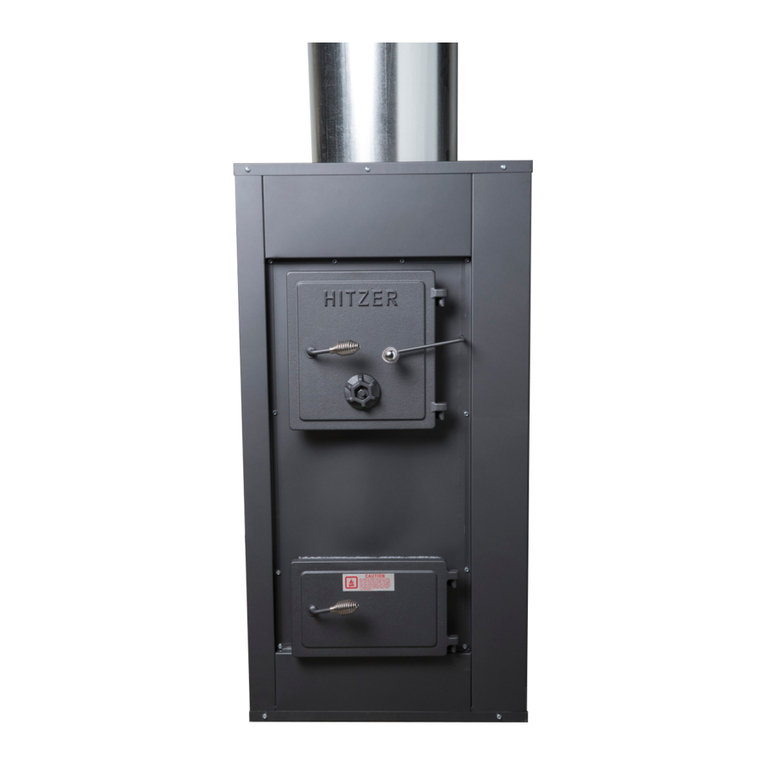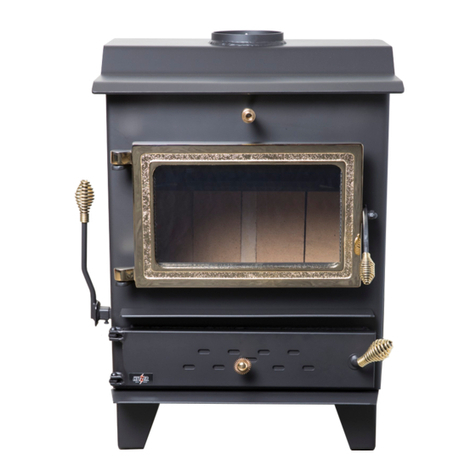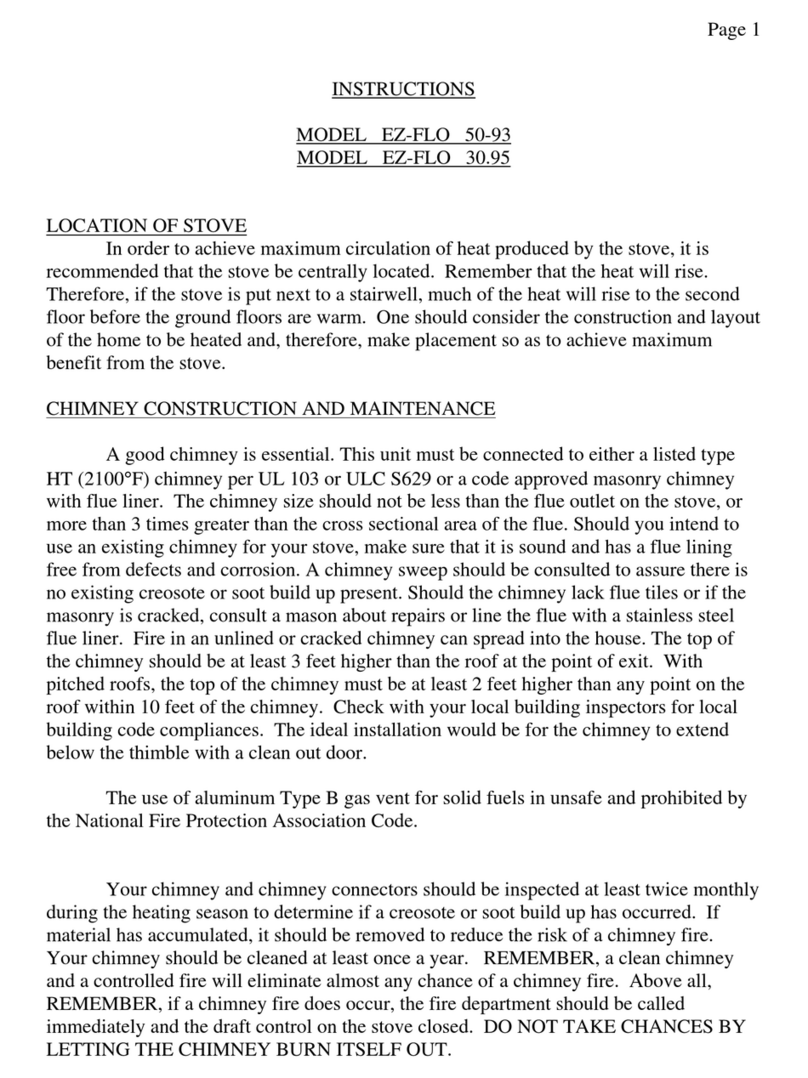fasten to insert with screws. Fasten the shroud top panel to the two shroud side panels
with 2 bolts at each end. The optional brass trim for around the shroud, if ordered, should
be fastened, now by cutting and fitting the sides, then the top and corner, drill holes and
fasten with screws provided. Place the insulation that is provided behind the shroud on
sides and top to assure a good seal on the face of your fireplace. Now push your insert the
remainder of the distance into your fireplace until shroud panel seals top and sides. If
your fireplace has deep mortar joints or if your fireplace is rough stone make sure all
joints and cavities are sealed. More insulation may have to be added. This is regular
unfaced fiberglass building insulation. Slightly lift your unit and remove the metal or
cardboard that is protecting your hearth
Installation in a factory built fireplace (see fig 1)
Install only in a factory built fireplace that is listed per UL 127 (US) or ULC S610
(CANADA) and is approved for insert installations. Alterations to the fireplace in any
manner are not permitted with two exceptions. The first is the chimney damper may be
removed to install the liner. The second is any external trim pieces not effecting the
operation of the fireplace may be removed provided they can be stored on or within the
fireplace for reassembly if the insert is removed. Attach the metal plate provided with
these instructions to the rear of your fireplace. This states that the fireplace must be
returned to its original condition for safe use if the insert is removed. Installation must
include a full length 6 inch listed chimney liner meeting type HT requirements (2100°F)
per UL 1777 (US) or ULC S635 or ULC S640 (CANADA). Liner must be securely
attached to the chimney top and also the flue collar of the insert. Remove your damper
from your fireplace or block open permanently to prevent it from accidentally closing and
causing smoke in your room. Run liner down chimney and support at top of fireplace.
Now position your insert on the hearth. First you may want to place a thin sheet of metal
or cardboard on your hearth for protection from chipping or scratching your hearth. With
your insert positioned on the hearth, you are now ready to fasten the shroud on the sides
of your insert with 2 screws on each side. Determine the depth of the insert in the
fireplace and adjust the shroud sides accordingly to line the flues up as close as possible.
The sides are adjustable and should be tightened to the insert at this time. The shroud
should overlap the face of the fireplace a minimum of 2”. This is necessary to hold the
insulation in place and insure a good airtight seal around fireplace. This seal is necessary
to prevent room air from entering the chimney area. This may also be accomplished by
sealing around the flue liner in the damper area. This must be done with ceramic wool
insulation or equivalents that will not burn or melt.
CAUTION: WHEN POSITIONING SHROUD IT MUST NEVER ALTER OR
RESTRICT AIR FLOW WITHIN OR AROUND FIREPLACE BY BLOCKING
ANY LOUVERS OR COOLING AIR INLET OR OUTLET PORTS.
CIRCULATING AIR CHAMBERS AROUND FIREPLACE ALSO SHALL NOT
BE BLOCKED.
Different sized custom shrouds are available to felicitate this. Contact your dealer or
Hitzer Inc to order. Pull chimney liner down into flue collar of the insert and fasten to
insert with screws. Fasten the shroud top panel to the two shroud side panels with 2


























